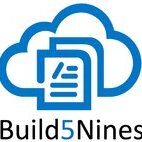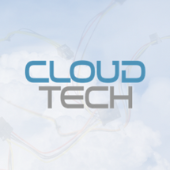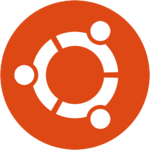Search the Community
Showing results for tags 'hybrid cloud'.
-
IBM has announced its acquisition of HashiCorp Inc., a leading multi-cloud infrastructure automation company, for $6.4 billion! This acquisition is poised to revolutionize the hybrid cloud landscape, offering enterprises a comprehensive end-to-end solution to navigate the complexities of today’s AI-driven application growth. Let’s look at the details of this cloud changing acquisition and its implications […] The article Analyzing IBM’s Acquisition of HashiCorp: A Game-Changer in Hybrid Cloud Management appeared first on Build5Nines. View the full article
-
- hashicorp
- acquisitions
-
(and 1 more)
Tagged with:
-
Cloud computing company Akamai Technologies, has extended its segmentation solution, Akamai Guardicore Segmentation, to hybrid cloud environments. Extending Akamai Guardicore Segmentation to the cloud helps reduce attack surfaces and helps contain attacks targeting cloud-native workloads. Network security professionals can seamlessly manage segmentation across their public cloud environments with the benefits of faster time to policy... Read more » The post Akamai extends segmentation solution to hybrid cloud environments appeared first on Cloud Computing News. View the full article
-
Connecting hybrid and multicloud workloads - Networking ArchitectureView the full article
-
- hybrid cloud
- multi-cloud
-
(and 2 more)
Tagged with:
-
Rumors are swirling that Broadcom wants to buy its way into the growing hybrid cloud market by acquiring VMware. The deal won’t come cheap—after news of the potential deal surfaced, VMware’s market cap soared to around $50 billion. Yes, billion with a ‘B’. As interest rates increase and investors reevaluate many of the lofty software […] The post Could Buying VMware Bring Broadcom Hybrid Cloud Bona Fides? appeared first on DevOps.com. View the full article
-
Scream if you want to go faster! When it comes to a dual hybrid-cloud-and-DevOps rollout, most organizations would admit they’re eager to get going a little bit faster. But what started so enthusiastically can turn to frustration (and a different kind of screaming starts) when they’ve accelerated into this major transformation without considering all the […] The post DevOps and Hybrid Cloud: Life in the Fast Lane? appeared first on DevOps.com. View the full article
-
Kubernetes networking is, for the most part, intra-cluster. It enables communication between pods within a single cluster: The most fundamental service Kubernetes networking provides is a flat L3 domain: Every pod can reach every other pod via IP, without NAT (Network Address Translation). The flat L3 domain is the building block upon which more sophisticated communication services, like Service Mesh ... https://blogs.cisco.com/developer/multicloudhybrid01
-
- networking
- service mesh
-
(and 3 more)
Tagged with:
-
Released today, data from more than 1,300 global respondents combines with expert analysis to reveal goals, benefits, and challenges of cloud-native technology in 2022 83% of respondents are using either hybrid or multi-cloud 38% see security as the biggest concern Nearly 50% say lack of in-house skills and limited manpower are the biggest obstacles to migrating to or using Kubernetes and containers 16 May 2022 – Canonical, the maker of Ubuntu, today released data from a new global survey revealing the goals, benefits, and challenges of cloud-native technologies. The second annual Kubernetes and Cloud Native Operations report has surveyed more than 1,300 IT professionals over the last year about their usage of Kubernetes, bare metal, VMs, containers, and serverless applications. The report also includes insights gathered by Canonical from experts at AWS, Google, the Cloud Native Computing Foundation (CNCF), Microsoft, WeaveWorks, and others. According to the survey, Kubernetes and cloud native technologies unlock innovation for organisations and allow them to achieve their goals. But the benefits of cloud native technologies vary, depending on their usage and the maturity of the organisations using them, with elasticity and agility, resource optimisation and reduced service costs identified as the top benefits, and security the most important consideration. Key Survey Findings and Expert Opinions 83% of respondents are using either hybrid or multi-cloud. In the last year alone, the percentage of respondents who did not use hybrid or multi-cloud dropped from 22.4% to 16.4%. Tim Hockin, principal software engineer at Google, discusses the reality behind that adoption: “People often build a straw man of hybrid or multi-cloud, with the idea of one giant mesh that spans the world and all the clouds, applications running wherever capacity is cheap and available. But in reality, that’s not at all what people are doing with it. What they’re actually doing is using each environment for just the things they have to use it for.” Mark Shuttleworth, CEO of Canonical, said of the increasing growth of hybrid cloud in the enterprise: “The key question is: how much of what you do every day can you do on multiple different clouds without thinking about it? For me, the sensible thing for a medium or large institution is to have a fully automated private cloud and also relationships with at least two public cloud providers. This way, businesses essentially benchmark themselves on doing any given operation on the private cloud and on the two public clouds.” 14% of respondents said that they run everything on Kubernetes, over 20% said on bare metal and VMs, and over 29% said a combination of bare metal, VMs, and Kubernetes. This distribution shows how the flexibility of Kubernetes allows organisations to run the same type of workloads everywhere. Looking back at last year’s highlight, where Kelsey Hightower stated that bare metal was a better choice for compute and resource-heavy use cases such as interactive machine learning jobs, it seems that the tune is changing. Actually, as running Kubernetes is becoming more accessible, Alexis Richardson speculates that organisations would further adopt Kubernetes on bare metal if they knew it was possible. 38% of respondents suggest that security is the most important consideration, whether operating Kubernetes, building container images, or defining an edge strategy. Keeping clusters up-to-date is a definitive best practice to solve security issues. However, according to Jose Miguel Parrella, principal architect at Microsoft, it is not as embedded within IT infrastructure strategy as one could expect. Today, it is more of a Day-30 discussion that only occurs within the small team of Kubernetes maintainers of every organisation. Combined with the fact that only 13.5% of people reported that they have “mastered” security in the cloud native space, it is clear that organisations have some room to grow when it comes to properly adopting and managing Kubernetes in production. Nearly 50% of respondents reported that lack of in-house skills and limited manpower were the biggest challenges when migrating to or using Kubernetes and containers. Ken Sipe, senior enterprise architect and co-chair of the Operator SDK, comments: “When people mention the lack of skill as a blocker, the truth is that they are often already in an environment where they are ready to do the next thing but don’t have the infrastructural or organisational support to do so. It is also a matter of buy versus build: when buying a solution and associated service, an organisation benefits from leveraging external resources and skillsets without having to build the capability in-house. When building it in house, the organisation can benefit from implementing its engineering discipline, which could be a useful differentiator.” To view the full report, click here. “The growth in Kubernetes and cloud-native technology shows no signs of stopping, so it’s vital that we understand the experience, and the concerns, of developers and users,” said David Booth, VP of Cloud Native Operations at Canonical. “This survey, and initiatives like the Canonical Operator Day at KubeCon this year, are ways for us not just to understand the needs of the enterprise ourselves, but to help increase the general understanding of this constantly evolving space.” About Canonical Canonical is behind Ubuntu, the leading OS for container, cloud, and hyperscale computing. Most public cloud workloads use Ubuntu, as do most new smart gateways, switches, self-driving cars, and advanced robots. Canonical provides enterprise security, support, and services to commercial users of Ubuntu. Established in 2004, Canonical is a privately held company. Contact Daniel Griffiths, Global Director of Communications pr@canonical.com View the full article
-
- kubernetes
- surveys
-
(and 3 more)
Tagged with:
-
The future of Fintech infrastructure is hybrid multi-cloud. Using private and public cloud infrastructure at the same time allows financial institutions to optimise their CapEx and OpEx costs. Why Private clouds? A private cloud is an integral part of a hybrid multi-cloud strategy for financial services organisations. It enables financial institutions to derive competitive advantage from agile implementations without incurring the security and business risks of a public cloud. Private clouds provide a more stable solution for financial institutions by dedicating exclusive hardware within financial firms’ own data centres. Private clouds also enable financial institutions to move from a traditional IT engagement model to a DevOps model and transform their IT groups from an infrastructure provider to a service provider (via a SaaS model). OpenStack for financial services OpenStack provides a complete ecosystem for building private clouds. Built from multiple sub-projects as a modular system, OpenStack allows financial institutions to build out a scalable private (or hybrid) cloud architecture that is based on open standards. OpenStack enables application portability among private and public clouds, allowing financial institutions to choose the best cloud for their applications and workflows at any time, without lock-in. It can also be integrated with a variety of key business systems such as Active Directory and LDAP. OpenStack software provides a solution for delivering infrastructure as a service (IaaS) to end users through a web portal and provides a foundation for layering on additional cloud management tools. These tools can be used to implement higher levels of automation and to integrate analytics-driven management applications for optimising cost, utilisation and service levels. OpenStack software provides support for improving service levels across all workloads and for taking advantage of the high availability capabilities built into cloud aware applications. In the world of Open Banking, the delivery of a financial application or digital customer service often depends on many contributors from various organisations working collaboratively to deliver results. Large financial institutions – the likes of PayPal and Wells Fargo are using OpenStack for their private cloud builds. These companies are successfully leveraging the capabilities of OpenStack software that enables efficient resource pooling, elastic scalability and self-service provisioning for end users. The Challenge The biggest challenge of OpenStack is everyday operations automation, year after year, while OpenStack continues to evolve rapidly. The Solution – Ops Automation Canonical solves this problem with total automation that decouples architectural choices from the operations codebase that supports upgrades, scaling, integration and bare metal provisioning. From bare metal to cloud control plane, Canonical’s Charmed OpenStack uses automation everywhere leveraging model-driven operations. Charmed OpenStack Charmed OpenStack is an enterprise grade OpenStack distribution that leverages MAAS, Juju, and the OpenStack charmed operators to simplify the deployment and management of an OpenStack cloud. Canonical’s Charmed OpenStack ensures private cloud price-performance, providing full automation around OpenStack deployments and operations. Together with Ubuntu, it meets the highest security, stability and quality standards in the industry. Benefits of Charmed OpenStack for fintechs Secure, compliant, hardened Canonical provides up to ten years of security updates for Charmed OpenStack under the UA-I subscription for customers who value stability above all else. Moreover, the support package includes various EU and US regulatory compliance options. Additional hardening tools and benchmarks ensure the highest level of security. Every OpenStack version supported Each upstream OpenStack version comes with new features that may bring measurable benefits to your business. We recognise that and provide full support for every version of OpenStack within two weeks of the upstream release. Every two years we release an LTS version of Charmed OpenStack which we support for five years. Upgrades included, fully automated OpenStack upgrades are known to be painful due to the complexity of the process. By leveraging the model-driven architecture and using OpenStack Charms for automation purposes, Charmed OpenStack can be easily upgraded between its consecutive versions. This allows you to stay up to date with the upstream features, while not putting additional pressure on your operations team. A case in point The client: SBI BITS SBI BITS provides IT services and infrastructure to SBI Group companies and affiliates. SBI Group is Japan’s market-leading financial services company group headquartered in Tokyo. When public cloud is not an option Operating in the highly regulated financial services industry, we need complete control over our data. If our infrastructure isn’t on-premise, it makes regulatory compliance far more complicated. Georgi Georgiev, CIO at SBI BITS The challenge With hundreds of affiliate companies relying on it for IT services, SBI BITS – the FinTech arm of SBI Group was under immense pressure to make its infrastructure available simultaneously to numerous internal clients, often with critically short time to market requirements. The solution Canonical designed and built the initial OpenStack deployment within a few weeks, and is now providing ongoing maintenance through the Ubuntu Advantage for Infrastructure enterprise support package. The initial implementation consisted of 73 nodes each at two sites, deployed as hyper-converged infrastructure and running Ubuntu 18.04. This architecture enables a software-defined approach that unlocks greater automation and more efficient resource utilisation, leading to significant cost savings. The outcome Canonical’s OpenStack deployment has streamlined the infrastructure delivery, ensuring that the company can meet the IT needs of SBI Group without the stress. Automation eliminates the majority of physical work involved in resource provisioning. Canonical delivered OpenStack at one third of the price of competing proposals. Hyper-converged architecture and full-stack support seeks to deliver both CAPEX and OPEX savings. Canonical’s solution was a third of the price of the other proposals we’d received. The solution is also proving to be highly cost-effective, both from CAPEX and OPEX perspectives. Georgi Georgiev, CIO at SBI BITS Execute your hybrid cloud strategy OpenStack gives financial institutions the ability to seamlessly move workloads from one cloud to another, whether private or public. It also accelerates time-to-market by giving a financial institutions’ business units, a self-service portal to access necessary resources on-demand, and an API driven platform for developing cloud-aware apps. OpenStack is a growing software ecosystem consisting of various interconnected components. Therefore, its operations can at times be challenging even in a fully automated environment. Canonical recognises that and offers fully managed services for organisations. Canonical’s managed OpenStack provides 24×7 cloud monitoring, daily maintenance, regular software updates, OpenStack upgrades and more. We are always here to discuss your cloud computing needs and to help you successfully execute your hybrid cloud strategy. Get in touch View the full article
-
IBM recently announced a definitive agreement to acquire Instana, a German-American software firm that specializes in developing APM software. With this acquisition, IBM can further advance its Hybrid Cloud and AI technology and reinforce its AI-powered automation capabilities. View the full article
-
Forum Statistics
73.8k
Total Topics71.7k
Total Posts
.png.6dd3056f38e93712a18d153891e8e0fc.png.1dbd1e5f05de09e66333e631e3342b83.png.933f4dc78ef5a5d2971934bd41ead8a1.png)


.thumb.jpg.10b3e13237872a9a7639ecfbc2152517.jpg)
